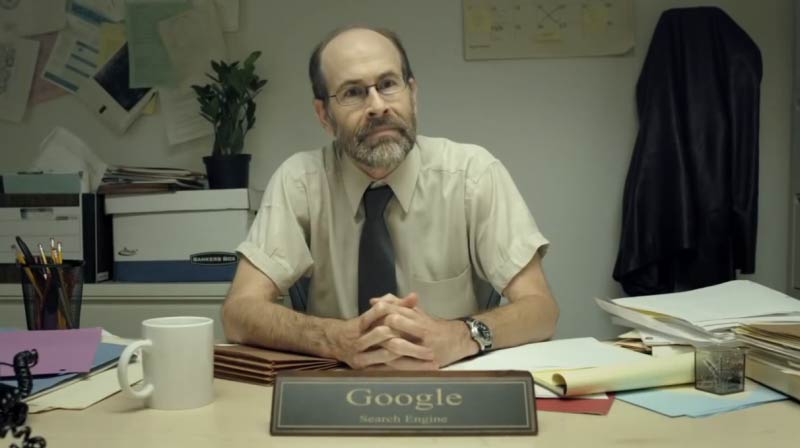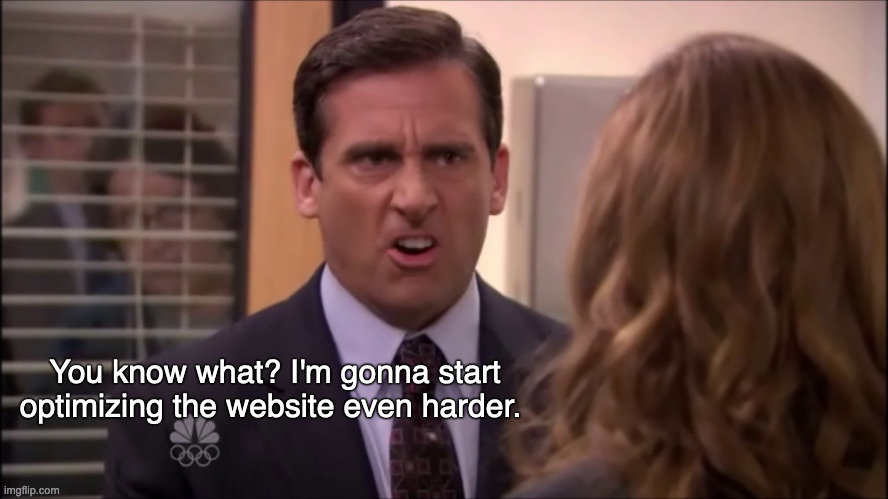For over a decade in search engine optimization, I have witnessed remarkable evolutions and regressions in how companies approach SEO and user experience design.
What was once seen as distinct disciplines of "on-page optimization" on the one hand and "usability" on the other have become a more cohesive pursuit of crafting delightful online experiences for users.
So, heads up, this article is my reflection on SEO.
Early in my career helping businesses achieve higher search visibility, the focus was very much on technique: keyword stuffing, link building, meta descriptions, headings, alt text, and so on.
Guiding factors were search engines' algorithms and what seemed to be rewarding or penalizing at any given moment. User needs, converting visitors into customers, was a secondary consideration, if thought of at all.
Technical SEO was done in isolation from other teams focusing on design, development, or marketing. This led to much sub-optimal and disjointed work, where the left hand seldom knew what the right was doing.
Fortunately, over the years, a more enlightened philosophy emerged that prioritized understanding user intent and satisfying their job-to-be-done from the inception of website or digital product design.
The search became seen not as an end but as one of many potential touchpoints in a user's journey where their needs could be addressed.
This shift demanded closer cooperation between specialists in search, usability, and business objectives. It pushed companies to view the online experience holistically from the user's perspective, not just optimize isolated portions of outwardly facing search engine spiders.
As someone who has guided many people and companies through this evolution, I can attest to how impactful taking a user-centric design thinking approach has proven.
Not only does it lead to far better outcomes for customers, prospects, and the bottom line, but it also ironically delivers more effective SEO results.
When search engines can better understand the true goal of a website thanks to clear on-page signals, they can more accurately match users to the most helpful information.
Organic traffic and qualified leads emerge as a natural byproduct of a well-designed experience, not the sole target in its own right.
I hope you're hooked on my comprehensive introduction. Let's dive into the five sections, focusing on key factors I want to elaborate on.
Companies avoiding SEO analysts' reasoning

All too often in the early days of my career, I encountered resistance from companies who viewed SEO as a quick-fix activity.
A stigma associated with the term "search engine optimization" brought to mind shallow tactics aimed solely at manipulating algorithmic factors rather than providing true value. Leadership especially had grown wary of so-called "SEO experts" making bold, unqualified claims about traffic and revenue increases.
Having observed countless unsuccessful attempts by fly-by-night online marketers and consultants promising the world without understanding business realities, it's not difficult to see where such skepticism originated.
SEO Proposals focused too heavily on technical aspects with little consideration for how changes might impact the user or brand experience.
Reports emphasized vanity metrics like backlinks and scores rather than conveying impact on tangible goals. There was an "SEO for SEO's sake" attitude rather than solving real customer problems.
As an analyst, overcoming these preconceived notions required demonstrating a more holistic perspective grounded in user-centered design. It meant communicating what was possible algorithmically and how proposed strategies aligned with and supported broader marketing or conversion objectives.
User research had to be prioritized to uncover pain points and opportunities that might be addressed online.
Technical recommendations then needed clear rationales for creating value by resolving users' issues.
Perhaps most importantly, there was an emphasis on iterative testing and learning rather than one-off "optimizations."
KPIs had to move beyond superficial stats to focus on meaningful impacts on tasks like lead generation, sales, or support inquiries.
In this way, SEO evolved from being seen as a black box "magic" task to a legitimate user experience design discipline essential for any digital business.
Prioritizing user intent

User intent is what a person is looking to do or find when they type a search query into Google. There are different types of intents like informational queries where someone wants information, navigational where they want to go to a specific website, and transactional where they want to purchase something. For example, if someone searches "apple," they could be looking for info about the tech company, fruit recipes, or where to buy an iPhone.
To establish SEO as a user-centered practice rather than an exercise in manipulation, prioritizing an understanding of user intent became paramount.
This began by qualitatively researching the various tasks and objectives customers sought to fulfill through engaging with a company's website and online assets.
Traditional user testing and interview methods were employed to develop rich user personas representing common archetypes.
Focusing on why individuals took particular actions helped reveal key moments in their consideration journey where needs were not being fully met.
Pain points, frustrations, and areas of ambiguity could then be identified that presented opportunities for improved online experiences.
Quantitatively analyzing session data and conversion funnels backed up qualitative findings around where and why drop-offs occurred.
With deeper empathy for a website's role in users' lives, it became possible to recraft structures, workflows, and information architecture accordingly.
No longer was optimization an afterthought but a prime consideration integrated into each stage of the design process. The content was developed to directly address discovered questions and resolve specific hurdles at their point of need.
Graphics, calls-to-action, and signposting aimed to intuitively guide people through their goal achievement.
Technical SEO efforts also became better targeted by prioritizing insights into user behaviors and mindsets. Keywords, headings, and internal links could be optimized to match how people naturally searched rather than making arbitrary guesses.
Understanding task completion paved the way for more helpful content that search engines could accurately recognize and match to intent. The experience and signals given to search engine bots were thus a reflection of the experiences of actual humans.
With user needs firmly guiding strategic and creative work, SEO transitioned from an isolated consideration to a driving factor in holistic digital experience design. Understanding intent positioned it to become a true user-centered discipline.
Closer cooperation between specialists

Recognizing that optimization work could no longer happen in a silo if user experiences were to truly improve demanded closer cooperation between specialists.
As an SEO analyst, I had to educate counterpart roles on how search-fueled traffic leads people to consider businesses online. In turn, UX design and product management insights helped shape my perspective.
Regular collaboration meant user researchers shared qualitative findings that revealed peoples' true underlying job-to-be-done, not just surface complaints.
This guided content and functionality recommendations to solve the highest priority issues. Aggregated analytics and tagging made quantitative session data accessible to all, so behavioral patterns were well understood across teams.
Design and development teams incorporated SEO best practices like keyword targeting and internal linking organically as mandatory specs rather than optional additions. Their work directly considered how to surface appropriate information to searchers at each customer journey stage.
Likewise, technical SEO tactics were planned upfront to support defined business goals and experience flows. Rather than one-off fixes, optimizations became continual works aligned with new feature launches or campaign periods.
Shared OKRs bridged marketing, sales, and product objectives so all specialist work reinforced a unified mission. Campaigns, features, and optimizations could be planned and measured against common KPIs.
We holistically tested, learned, and improved the total user and searchability experience as a united front. Silos dissolved, so the full picture was constantly optimized versus fragmented pieces.
Most importantly, it ensured a consistently positive experience for both humans and search engines.
Viewing the online experience holistically

Treating SEO as more than sanitized technical checkboxes or vanity metrics also demanded considering the totality of how users interacted with a brand across all digital touchpoints.
Optimization work had to acknowledge that peoples' journeys began beyond organic search results pages. In reality, impressions might occur via chats, emails, social media, or embedded content before organically engaging further online.
A holistic understanding of customer consideration pathways informed how SEO could complement and leverage these other parts of the overall experience.
For example, smart keyword targeting and structured data could help search placements reinforce existing brand awareness driven by ad campaigns.
Authoring helpful reviews on third-party sites established citing backlinks while giving value. Success was best measured not in myopic silos but by cross-channel attribution models.
Likewise, a consistent narrative must be transported as users dip in and out of sessions across devices.
Responsiveness and personalized histories kept engagements frictionless regardless of whether on desktop or mobile. Internal linking frameworks and content structured for optimal displaying in varying form factors assured smooth navigation everywhere.
Perhaps most importantly, optimizing strictly to alleged algorithmic factors risked creating disjointed, inauthentic experiences.
Advanced analytics afforded testing multivariate hypotheses to ensure enhancements aided usability before being widely implemented. User testing feedback proved invaluable for validating design iterations felt natural rather than artificially optimized.
Seeing the total customer journey reinforced that SEO served not as a channel itself but as an accessibility component, deepening engagement across all touchpoints. True success is derived not from surface changes but from meaningful impacts like converted leads and loyal customers.
The impact of taking a user-centric approach

In practice, taking a distinctly user-centric approach to SEO and experience design yielded measurable impacts for the businesses I collaborated with.
Some of the most noteworthy outcomes included:
Improved conversions: By addressing systemic pain points, projects saw increased qualified leads generated and transaction values. Usability enhancements helped preserve higher conversion rates even as traffic volumes grew.
Loyal return traffic: Streamlining tasks led to significant decreases in bounce rates and increases in average session duration, indicating users found what they needed efficiently. Repeated engagements showed the experience was meeting lasting needs.
New customer acquisition: Better understanding jobs-to-be-done uncovered white space opportunity areas. Curating helpful information for unfulfilled needs drove acquiring new audiences and expanding into adjacent verticals.
Strengthened brand authority: Authoring high-quality, solution-oriented content elevated businesses' thought leadership in search results and third-party sites. This boosted organic awareness and inbound links over the long term.
Happier employees: Streamlining internal tools and documentation based on observed pain points improved employee productivity and satisfaction. This had follow-on benefits to customer service.
Increased revenues: While difficult to attribute, projects correlated with millions in additional annual revenues and major competitive gains in key markets. Return on investment consistently exceeded projections.
Perhaps most profoundly, a human-centered design thinking approach built goodwill, loyalty, and advocacy that compounded over time.
Qualitative feedback showed users genuinely appreciated feeling understood and that their optimal experience was the priority - not secondary to short-term algorithmic wins. This created alignment between business goals of growth and delivering true customer value.
Let's conclude.
You get the gist, right?
Based on my experience, aligning technical SEO and UX priorities created a virtuous cycle where each reinforced gains in the other.
By helping users, search visibility improved naturally and sustainably, elevating both disciplines' true purpose of enriching lives through helpful information and experiences.
So yeah, good SEO = great user experience.
Credit: Cover photo by Ciprian Tudor on Unsplash